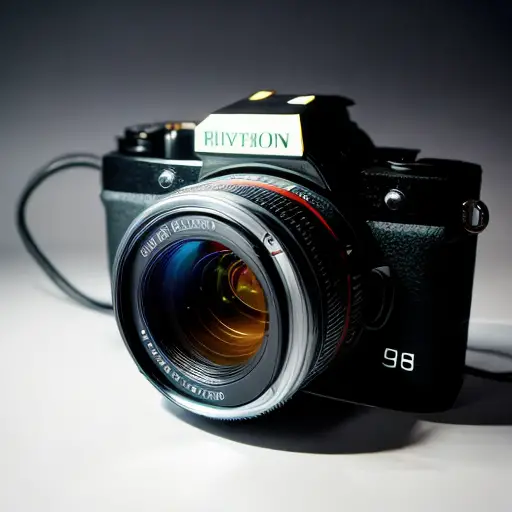Understanding the Basics of a Digital Camera RPi
Alright, picture this: you've got a passion for photography, but your wallet is as empty as a memory card after a wedding shoot. Fear not, my fellow shutterbugs, for I have a solution that won't break the bank or your funny bone. Let's dive into the basics of building your very own digital camera using the Raspberry Pi (RPi). Now, before you start envisioning a camera made entirely of raspberries, let me clarify. The RPi is a tiny yet mighty computer that can be transformed into a camera with a few simple steps. So grab your soldering iron and get ready to snap some hilarious shots, because we're about to embark on a journey into the world of DIY photography!
Gathering the Necessary Components for Your DIY Digital Camera RPi
An interesting fact about building a digital camera using Raspberry Pi (RPI) is that it allows for endless customization and experimentation. With RPI's versatility and open-source nature, you can not only assemble a basic camera but also explore advanced features like time-lapse photography, motion detection, facial recognition, and even thermal imaging. This flexibility makes it an excellent platform for photography enthusiasts, hobbyists, and students to learn about both hardware and software aspects of digital imaging technology.
Alright, my aspiring camera builders, let's talk about gathering the necessary components for your DIY digital camera RPi. First things first, you'll need a Raspberry Pi board, which is the heart and brain of this project. Think of it as the paparazzi's camera body. Next up, you'll need a camera module, like the Raspberry Pi Camera Module, to capture those picture-perfect moments. Don't forget about a power supply, because even the most talented photographers need some juice to keep going. And of course, you'll need a memory card to store all those hilarious snapshots. Lastly, grab some cables, a case to protect your masterpiece, and a dash of creativity. With these components in hand, you'll be well on your way to building a digital camera RPi that'll make even the pros green with envy!
Assembling and Configuring Your Digital Camera RPi

Now that you've gathered all the necessary components for your digital camera RPi, it's time to roll up your sleeves and get down to business. First, you'll need to assemble your RPi board and camera module. It's as simple as connecting the camera module to the designated port on the RPi board. Just make sure to handle them with care, as delicate as a photographer's ego when their shot is out of focus.
Once you've got your camera RPi assembled, it's time to configure it. Start by connecting your RPi to a monitor or TV using an HDMI cable. This will allow you to see what your camera sees and make any necessary adjustments. Next, power up your RPi using the power supply you gathered earlier. Watch as it comes to life, ready to capture the world through its lens.
Now, it's time to dive into the software side of things. You'll need to install the Raspbian operating system on your RPi. Don't worry, it's not as complicated as trying to understand the inner workings of a photographer's mind. Just follow the step-by-step instructions provided by the Raspberry Pi Foundation, and you'll be up and running in no time.
Once Raspbian is installed, it's time to configure the camera module. Open up the Raspberry Pi Configuration tool and enable the camera interface. This will allow your RPi to communicate with the camera module and capture those hilarious moments you're itching to immortalize. Don't forget to save your changes and reboot your RPi for the settings to take effect.
Congratulations, my fellow camera builders! You've successfully assembled and configured your digital camera RPi. Now, it's time to let your creativity run wild and capture the world through your own lens. Whether you're snapping funny faces or documenting the beauty of everyday life, your DIY camera RPi is ready to be your trusty companion on this photographic adventure. So go forth, my shutterbugs, and let the laughter and memories unfold!
Enhancing Your Digital Camera RPi with Advanced Features and Functionality
A fun fact about building a digital camera using Raspberry Pi is that you can turn it into a DIY camera that captures images in infrared (IR) light. By removing the IR filter from the camera module and replacing it with an IR-pass filter, you can create a camera that can see and capture images in the normally invisible IR spectrum. This allows you to capture unique and ethereal images, revealing a hidden world of infrared light that is not visible to the naked eye. It's a fun and creative way to explore photography beyond what our eyes can perceive!
Now that you've mastered the basics of building a digital camera RPi, it's time to take it to the next level and enhance its capabilities. One way to do this is by exploring the world of software libraries and APIs specifically designed for the Raspberry Pi camera module. These resources can unlock a whole new realm of possibilities, allowing you to implement advanced features like face detection, time-lapse photography, or even motion tracking. With a little bit of coding magic, you can transform your DIY camera RPi into a versatile tool that captures not only hilarious moments but also stunning visual experiments. So, don't be afraid to dive into the vast sea of possibilities and let your creativity soar as you push the boundaries of what your camera RPi can do.
